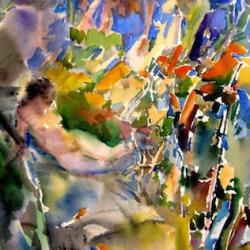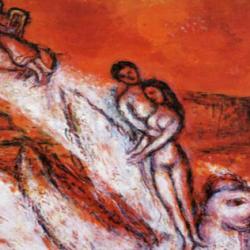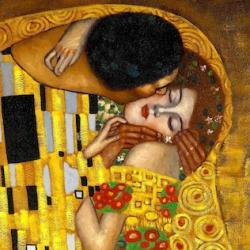The final chapter of the Song of Songs is filled with imagery of birth, and rebirth. The Bride longs to be as near to Dodi as a sister to her brother, united in a mother, nursing at the same breasts (v. 1). She wants to take Dodi into the “house of my mother,” where she will serve him spiced wine (v. 2). After many warnings about rousing love, she finally rouses Dodi under the apple tree, his awakening a kind of coming-to-life (v. 8a). There, Dodi’s mother gave him birth, under the same tree where the Bride now arouses him (v. 5b). Freud, stand aside; Solomon already knew that every love is a memory of Moma.
This works at a number of levels. Literally/sexually, a man’s life is ideally a story of two women – the mother who gives him birth and the lover who brings him to new life, the mother from whose womb he is harvested and the woman into whose womb he plants new seed. As the near-universal prohibition of material incest indicates, it is essential that these be two different women. There can be no movement in history if a man plants the same field from which he was taken. That is a confusion that ties time in knots.
It works also at a redemptive historical level, for “Abraham has two wives.” For Jesus too, the allegory works: Jesus is born of the virgin’s womb, born from Mother Israel; He wins a spotless bride that resembles His mother, but it is a new bride, not mother Israel but a Jew-Gentile bride.















